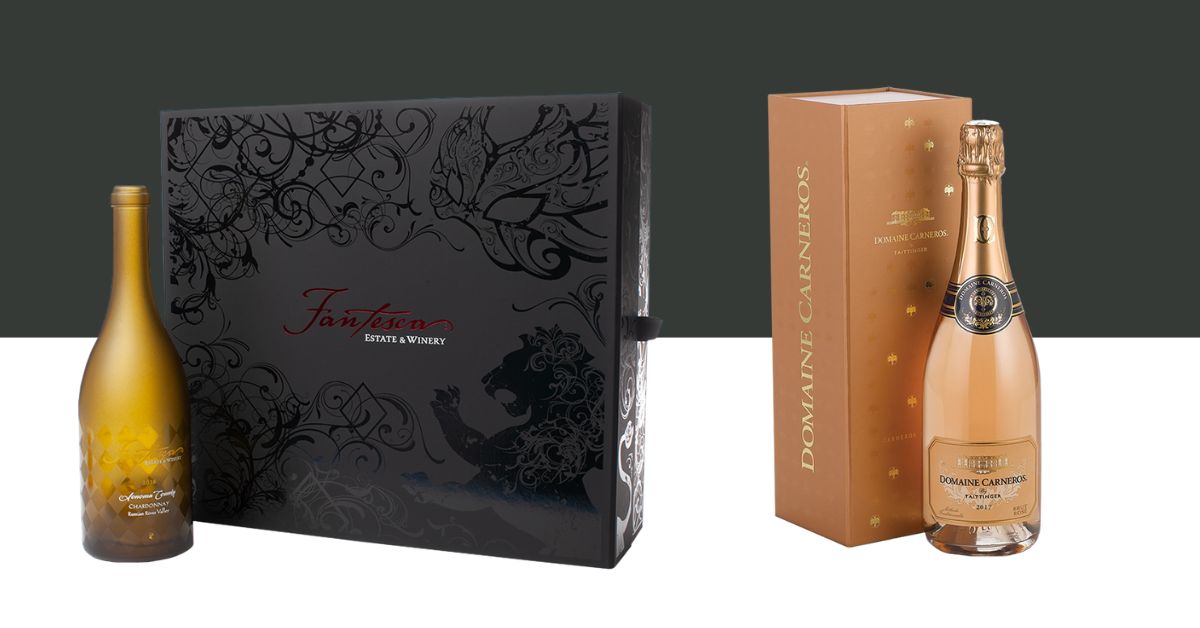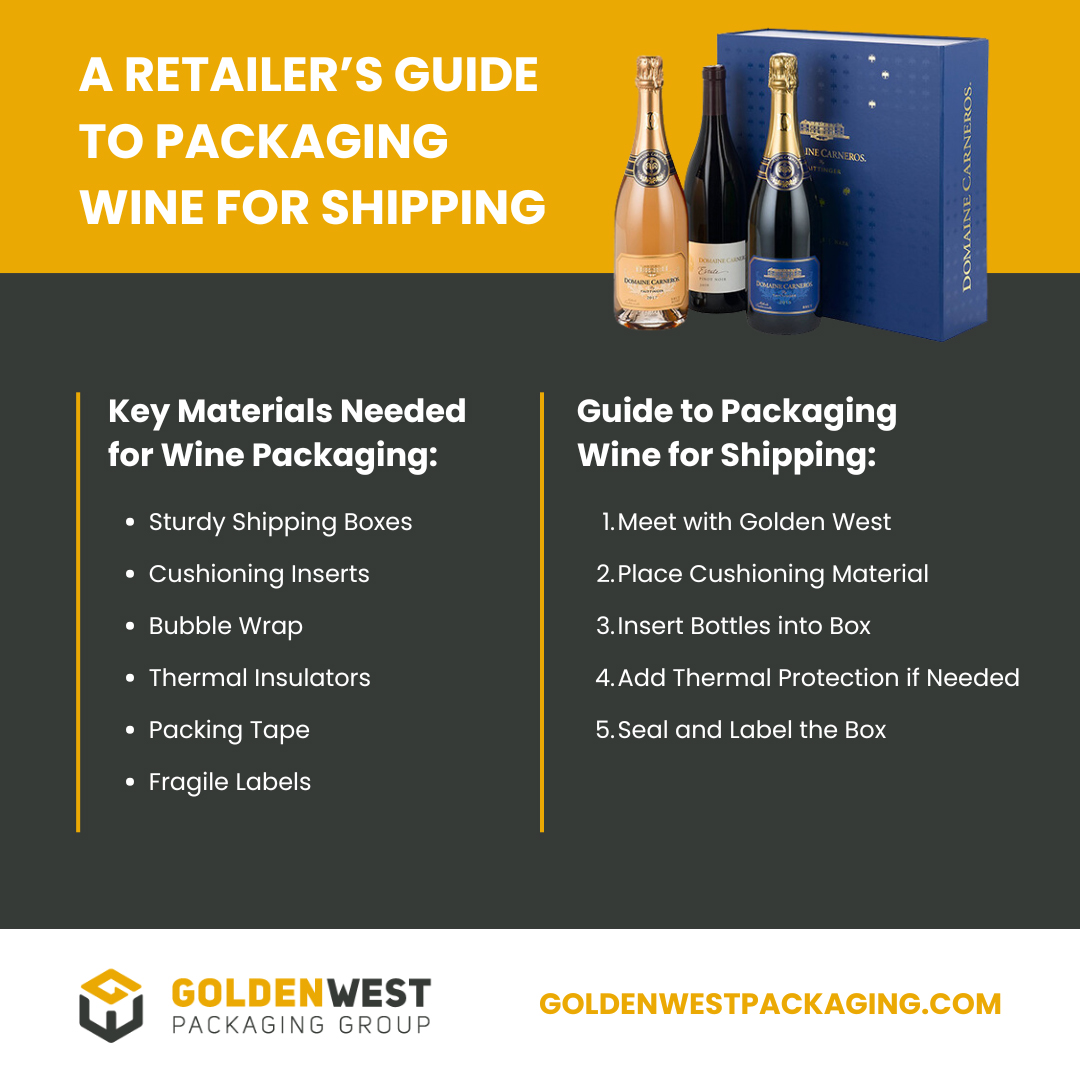
Shipping wine is a delicate art that involves more than just placing a bottle in a box and sending it on its way. For retailers, packaging wine for shipping is a task that can make or break customer satisfaction. In this guide, explore the importance of proper wine packaging, key materials, how to package wine, and so much more. Ensuring a safe delivery of your wine starts here.
The Importance of Proper Wine Packaging
Proper wine packaging is essential to protect the product during transit, preserving its quality and preventing breakage. Wine bottles are fragile and susceptible to damage when exposed to excessive heat, cold, or movement.
By using the right packaging materials, retailers can shield the bottles from these elements. Ensuring that wine arrives intact fulfills customer expectations and enhances the reputation of the retailer, leading to repeat business and positive reviews.
Key Materials Needed for Wine Packaging
Selecting the right materials is a critical step in ensuring the safe delivery of wine. The choice of materials impacts the protection, presentation, and sustainability of your packaging solution. Here’s a rundown of key materials needed:
Sturdy Shipping Boxes
Using high-quality, durable boxes, such as luxury rigid boxes, is crucial for securing the wine bottles during transport. These boxes should be strong enough to withstand handling and environmental stresses without collapsing.
Cushioning Inserts
Foam inserts, molded pulp, or corrugated dividers are essential for holding the bottles in place and providing cushioning. These materials prevent movement within the box and reduce the risk of breakage.
Bubble Wrap
This versatile protective layer provides additional cushioning around the bottles, ensuring they are insulated from shocks and vibrations.
Thermal Insulators
To regulate temperature fluctuations that can spoil wine, thermal liners or gel packs may be used, particularly for long-distance shipping or deliveries during extreme weather conditions.
Packing Tape
Heavy-duty packing tape is vital for sealing boxes securely, preventing accidental opening or tampering during transit.
Fragile Labels
Clearly marked “fragile” labels alert handlers to take care, thereby minimizing mishandling and potential damage to the wine bottles.
Utilizing these materials ensures a robust packaging approach, safeguarding the quality and integrity of the wine throughout its journey to the customer.
Step-by-Step Guide to Packaging Wine for Shipping
Careful preparation and attention to detail are key to successful wine packaging. Follow this step-by-step guide to ensure your wine shipments are secure and ready for the road:
- Select an Appropriate Box Size: Begin by choosing a box that fits the number and size of bottles you need to ship. Overly large boxes can lead to excess movement, while too small a box won’t provide enough protective space.
- Prepare the Box: Secure the bottom of the box with heavy-duty packing tape to ensure it can hold the weight of the wine without giving way. Reinforce any seams for added protection.
- Place Cushioning Material: Layer the bottom of the box with the cushioning materials mentioned above to ensure the bottles are securely held in place. This foundational layer is crucial for absorbing shocks during transit.
- Wrap Each Bottle: Individually wrap each wine bottle in bubble wrap. Ensure the wrap covers the entire bottle, paying extra attention to the neck and bottom because these areas are most vulnerable to damage.
- Insert Bottles into Box: Place the wrapped bottles upright into the sectioned inserts inside the box. Ensure they fit snugly without touching one another or the box walls to prevent shifting.
- Add Thermal Protection if Needed: If shipping in fluctuating temperatures, here is where you want to add the thermal liners or gel packs around the bottles for a stable temperature throughout transit.
- Seal and Label the Box: Close the box and securely seal it with packing tape, paying attention to all seams. Attach fragile labels prominently on all sides to alert handlers to the delicate nature of the contents.
Legal Considerations for Shipping Wine
Shipping wine involves navigating a complex landscape of legal regulations that vary by country, state, and even municipality. First and foremost, retailers must ensure they comply with both federal and local laws regarding the sale and shipment of alcohol. This includes obtaining the necessary licenses and permits to ship wine across regional boundaries.
Age verification is a critical requirement; packages should only be delivered to recipients who can provide legal proof of age. Moreover, certain regions may have restrictions on the volume of wine that can be shipped within a given time frame. Being well-versed in these regulations is crucial to avoid legal penalties and ensure smooth business operations.
Tips for Ensuring Safe Delivery
While proper packaging is a critical component of safe delivery, there are additional steps you can take to enhance the chances of a successful shipment.
- Choose Reliable Shipping Partners: Select a reputable courier who has experience handling fragile and perishable goods to minimize transit risks.
- Monitor Weather Conditions: Avoid shipping wine during extreme weather conditions to prevent temperature-induced spoilage.
- Communicate with Customers: Inform customers of estimated delivery times and remind them to be available to receive the shipment.
- Track Shipments: Use shipment tracking to monitor the package’s progress and address any delivery issues promptly.
- Follow-Up: After delivery, follow up with customers to confirm receipt and satisfaction, addressing any concerns immediately for customer retention.
Common Mistakes To Avoid in Wine Shipping
Avoiding common pitfalls can make a significant difference in the success of your wine shipments. Here are some mistakes to steer clear of:
- Inadequate Packaging: Failing to use quality materials or skimping on protective inserts increases the risk of breakage during transit.
- Ignoring Temperature Sensitivity: Neglecting to use thermal protection can lead to spoilage from exposure to heat or cold.
- Incorrect Labeling: Not marking packages as “fragile” undermines the chances of careful handling by shippers.
- Non-Compliance with Legal Requirements: Shipping without necessary licenses or ignoring age verification can result in penalties.
- Underestimating Shipping Time: Not accounting for potential delays can lead to customer dissatisfaction, especially during peak seasons.
Packaging wine for shipping is a vital aspect of your brand’s reputation and customer satisfaction. By following this retailer’s guide to packaging wine for shipping, you’ll be equipped with the knowledge and strategies to ensure safe and successful deliveries. From selecting the right materials to navigating legal regulations and avoiding common pitfalls, every step plays a role in creating a positive customer experience.




